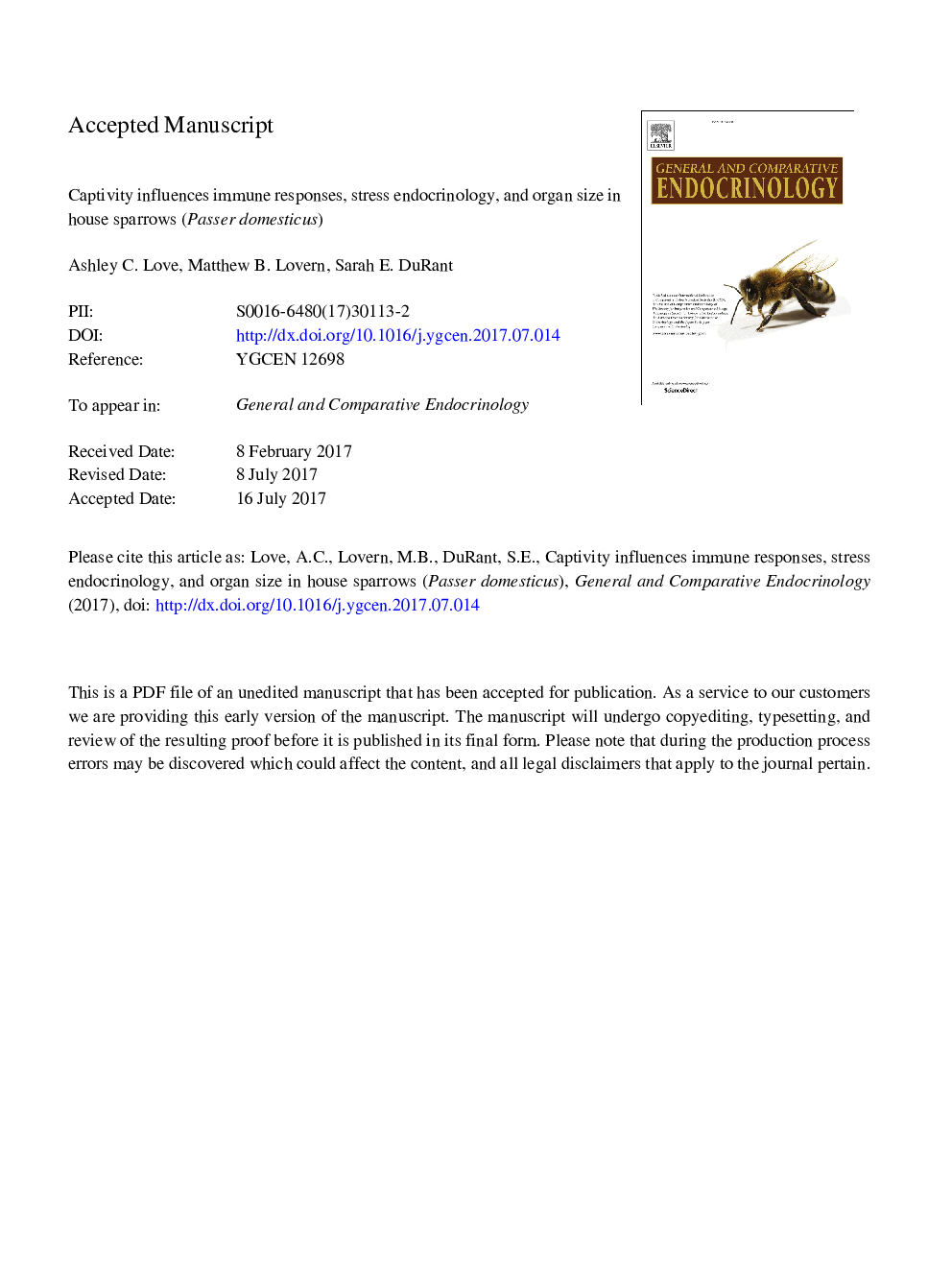| Article ID | Journal | Published Year | Pages | File Type |
|---|---|---|---|---|
| 5587554 | General and Comparative Endocrinology | 2017 | 39 Pages |
Abstract
Studies using wild animals in laboratory-based research require bringing wild-captured organisms into a novel setting, which can have long-lasting impacts on physiology and behavior. In several species, captivity stimulates stress hormone production and can alter immune function. Despite this, there is little consensus on how captivity influences stress hormone regulation, or if captivity-induced changes in stress hormone production and regulation mediate changes in immune function. In this study, we investigate the influence of captivity on the physiology of a wild bird commonly-used in laboratory-based research, the house sparrow (Passer domesticus). We tested how captivity influences stress endocrinology, immune responses, and organ mass, and also investigated if the production or regulation of corticosterone, the main stress hormone in birds, correlated with changes in immunity. We found that baseline corticosterone concentrations and maximum capacity of the adrenals to secrete corticosterone increase following captivity and remain elevated after 9Â weeks of captivity. A measure of innate immune function, the bactericidal ability of plasma, also increased with time spent in captivity. Wound healing was also influenced by time spent in captivity, with birds taking almost 2Â days longer to heal if they were wounded after 3Â weeks in captivity when compared with birds that were wounded immediately upon capture. Additionally, captivity caused notable reductions in spleen and liver mass. Together, these results imply that captivity can have long-lasting effects on house sparrow corticosterone release and immune function, and suggest that even after 9Â weeks house sparrows do not acclimate physiologically to life in captivity.
Related Topics
Life Sciences
Biochemistry, Genetics and Molecular Biology
Endocrinology
Authors
Ashley C. Love, Matthew B. Lovern, Sarah E. DuRant,
